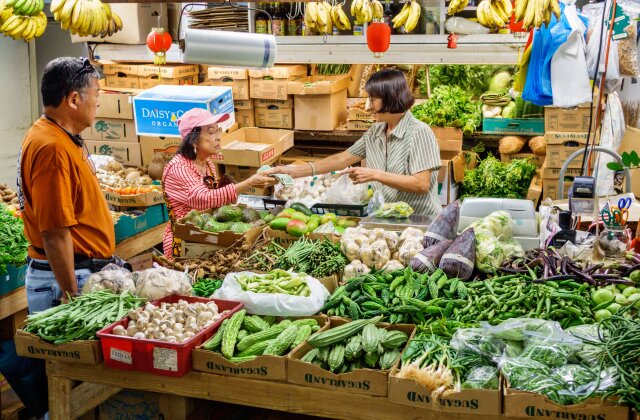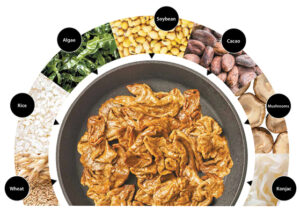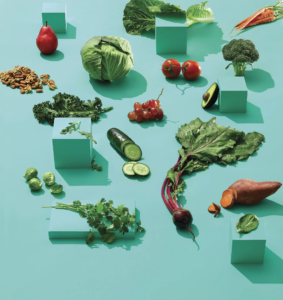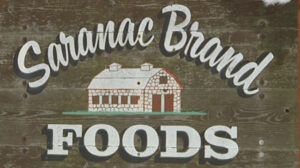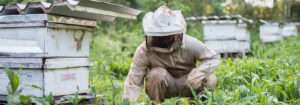HILO, Hawaii — As people push back sated from their Thanksgiving tables this year, only a few will stop to think about where all that food comes from. But in Hawaii, the chances are good it comes from somewhere else.
In this remote island state, despite a year-round growing season, just 15 percent of the food supply is grown locally. The rest arrives on huge container ships, putting the state in peril every time there’s a hurricane or shipping strike, such as in 2012, when a California port strike led to bare store shelves in Hawaii. University studies have estimated there’s only an 11-day supply of food in the state at any given time.
Democratic Gov. David Ige, in a 2014 campaign promise, pledged to double food production by 2020. It’s an ambitious goal.
Hawaii is going through a transition right now, says Scott Enright, director of Hawaii’s Department of Agriculture. Gone are the days of the “Big Five,” when interconnected corporations ran massive sugar and pineapple plantations. The last sugar plantation closed in late 2016, leaving behind fallow land and empty backyard plots where workers had grown their own kitchen gardens. Also lost were the regular investments plantation owners made in infrastructure, such as access to a water supply that benefited entire communities.
The state has bought land on all of Hawaii’s islands to lease out to farmers, is building and enhancing slaughterhouses and is working to attract large producers, Ige says. Among the incentives: a low-interest revolving loan fund, a feed subsidy for livestock farmers and state grants to help livestock producers reestablish and expand their herds, he says. Ige says he plans to ask for more money for those programs when the Legislature meets in January.
“Anecdotally, we believe we’ve made significant progress,” Ige said in an Oct. 25 interview with U.S. News, citing increased interest from large-scale producers. “We see signs of progress in the whole range of agriculture.”
During his 2016 remarks at the Honolulu meeting of the IUCN World Conservation Congress, Ige cited studies finding that diversified crops are grown on 16,900 acres statewide, more than double the 7,489 acres devoted to leaf, root and melon crops in 1980. Much of that, Ige said, is consumed locally.
The 2016 agricultural footprint study, however, found a drastic drop in overall cropland following the closure of most of the sugar plantations. In 1980, Hawaii had 350,830 acres in cropland and another 1.1 million acres in pasture. In 2015, lands in active crop use dropped to 151,830 acres and pasture shrunk to 761,430 acres, the study found.
Despite the interest in local food production, Hawaii’s agricultural sector is still largely export oriented, the study notes. Sugar, macadamia nuts, coffee, commercial forestry and flowers, seed research and other export crops account for more than 66 percent of the cropland use in the state, Enright says.
It’s still cheaper to import most vegetables than to grow them locally, while specialty crops for export can bring more profits for farmers, he notes.
Just one large producer could easily make the governor’s 2020 goal a reality, Enright says. Several such big projects are in the works.
Costco Wholesale Corp. is working on a 100-acre greenhouse project on Oahu that would produce lettuce, zucchini, tomatoes and green beans for its seven Hawaii stores.
Also on Oahu, a plan for a 1 million hen egg farm has been hatched by Seymour, Indiana-based Rose Acre Farms, in partnership with Hidden Villa Ranch, based in Fullerton, California.
Tech billionaire Larry Ellison, meanwhile, is working on a 200-acre solar-powered hydroponic greenhouse project on the island of Lanai. Ellison, who owns 98 percent of Lanai, has dubbed his new venture Sensei, and plans to start with Japanese Black Trifele tomatoes and Komatsuna mustard greens.
Eight companies the state selected to grow medical marijuana are adding a maximum of 15 cannabis farms to the mix. But one of the producers, Hawaii Island farmer Richard Ha, doesn’t have high hopes for the governor’s plan to double food production by 2020.
Ha in 2014 closed his hydroponic tomato operation, Hamakua Springs Country Farm, which at one point produced 2 million pounds of tomatoes annually, all for Hawaii consumption. In 2016, Ha closed his 150-acre banana farm after 35 years in business, citing rising oil prices and the discovery of banana bunchy top virus on the farm. While marijuana farming may help boost the economy, Ha considers food security a state priority and he thinks the state needs to step in with fewer regulations and more financial help to make farming profitable.
“Ain’t gonna happen,” Ha says. “If the farmer makes money to farm, they’re going to farm.”
Enright sees “precision ag” with big projects as the key to Hawaii’s food self-sufficiency. Precision agriculture uses science to time delivery of precise amounts of feed, water and nutrients to optimize yield with the least environmental impact.
But big business doesn’t necessarily help small family farmers in Hawaii, most in their third generation. Some want the government to do more, to provide more subsidies, more infrastructure, to help keep the farms going.
State Rep. Lynn DeCoite, a Democrat from the island of Molokai, and the only full-time farmer in the Hawaii Legislature, says food production won’t increase without incentives for smaller farmers. Her family’s L&R Farms, at 300 acres, is the largest sweet potato farm in Hawaii, specializing in the purple-fleshed sweet potatoes favored by locals and high-end restaurants.
The family also grazes 80 to 90 head of cattle on 500 acres of ranchland. That’s way down from the 400 head of cattle on 1,500 to 2,000 acres the family ran at the peak of production about 15 years ago, before land leases and insurance went up and the price of beef decreased.
DeCoite, whose legislative “canoe district” – which require people to travel across water to reach parts of the area – includes all of Molokai and Lanai and part of Maui, isn’t optimistic about the future of small farms as government imposes buffer zones for pesticides, more stringent food safety certifications and considers allowing more homes and campsites on agricultural lands. She feels the state doesn’t do enough to help established farmers continue in the business, but concentrates its grants on inexperienced farmers who want to try their hand at it.
